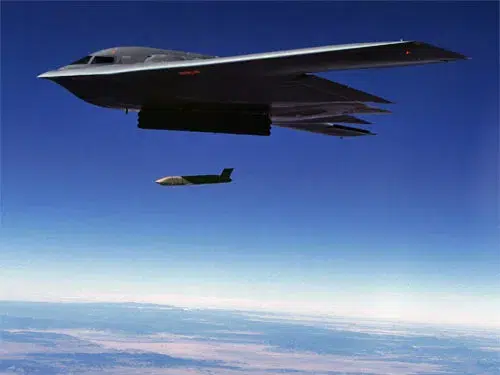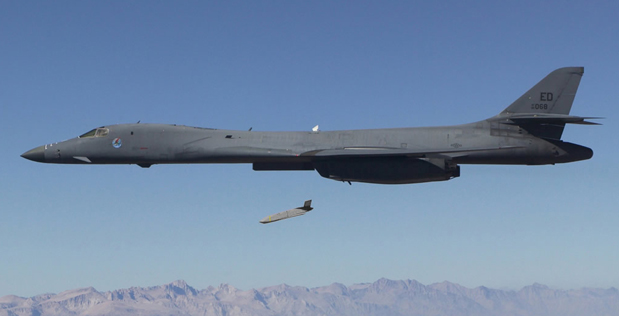Alex Hollings

According to a recent series of war games carried out by a Washington DC-based think-tank, preventing the success of a Chinese invasion of Taiwan could all come down to a single American missile system and its effective use against China’s invasion fleet.
A 165-page report released by the Center for Strategic and International Studies (CSIS), titled The First Battle of the Next War: Wargaming a Chinese Invasion of Taiwan outlined the outcomes of 24 wargame scenarios in which China launches a full-scale invasion in 2026. Leveraging the full breadth of unclassified information about each country’s respective military capabilities, stockpiles, and doctrine, the project team played each scenario through the end of the heaviest fighting, and the results were largely positive for those in the West… though positive is a subjective term.
While the United States was able to successfully help defend Taiwan in nearly all instances, every victory came at an incredible cost — including massive warships like aircraft carriers and dozens, if not hundreds, of tactical aircraft.
Of all the platforms and weapon systems employed in these war games, two similar and specific types of missile stood out as particularly essential to defending Taiwan: the AGM-158B Joint Air to Surface Standoff Missile-Extended Range (JASSM-ER) and its ship-hunting sibling, the AGM-158C Long Range Anti-Ship Missile (LRASM).
According to the CSIS report, America’s stockpiles of varied-purpose JASSM-ERs will reach as high as 3,650 units by 2026, while its stockpile of maritime-specific LRASMs will only reach 450 or so. And that may be a problem, as the LRASM could neuter much of China’s invasion without having to fly or sail many American assets into range of China’s anti-ship or anti-air weapon systems.
The AGM-158B JASSM-ER

JASSM-ER launched by a B-2 Spirit (U.S. Air Force photo)
The JASSM-ER is a conventionally armed, low-observable, air-launched cruise missile that first entered service in 2014. While its predecessor, the AGM-158 JASSM, was powered by a turbojet engine, the JASSM-ER swaps that out for a turbofan more like the powerplants found in tactical fighters. That new engine, alone with a re-organized internal structure for added fuel storage, increased the weapon’s range from around 230 miles (370 kilometers) to better than 620 miles (1,000 kilometers).
The missile is guided throughout most of its flight via an internal inertial navigation and GPS unit that was originally developed for weapons like AGM-154 Joint Standoff Weapon (JSOW), which is actually a glide bomb, but once it’s in close quarters, it transitions to an infrared seeker for terminal guidance.
 JASSM-ER in flight (Photo by Lockheed Martin, Courtesy of the U.S. Air Force)
JASSM-ER in flight (Photo by Lockheed Martin, Courtesy of the U.S. Air Force)That seeker can read more than just heat signatures, however, and it reportedly leveraged three-dimensional targeting models to locate and identify its intended target as it closes in. The missile can store up to eight different target images for multiple potential targets.
The missile carries a 1,000-pound WDU-42/B penetrating warhead, which includes at least 240 pounds worth of AFX-757 — a new form of explosive developed by the Air Force Research Laboratory/High Explosives Research and Development Facility, Eglin AFB, Florida.
The AGM-15C Long Range Anti-Ship Missile (LRASM)
 LRASM being fired by a B-1B Lancer (U.S. Air Force photo)
LRASM being fired by a B-1B Lancer (U.S. Air Force photo)The AGM-158C LRASM was based directly on the JASSM-ER, entering service four years after its sibling in 2018. While the LRASM shares a number of components with other JASSMs, its targeting and guidance suite is said to be unique. Unlike other missiles, the LRASM doesn’t need to have an intended target when launched. Instead, the missile can reportedly conduct autonomous targeting, leveraging a combination of passive RF data-link and onboard systems to identify enemy vessels in-flight, choosing a target once it finds it.
While not quite as long-legged as the JASSM-ER, the LRASM can strike targets as far as 230 miles out, giving launching aircraft plenty of distance to avoid the types of surface-to-air missile systems commonly leveraged by Chinese naval vessels, and with appropriate mission planning and support, could likely allow launch platforms to even avoid enemy fighter patrols.
 The AGM-158C Long Range Anti-Ship Missile would be essential to the defense of Taiwan (Lockheed Martin photo)
The AGM-158C Long Range Anti-Ship Missile would be essential to the defense of Taiwan (Lockheed Martin photo)The LRASM can be carried in large numbers by bombers or in smaller numbers by a variety of fighters. The B-1B Lancer can reportedly carry 24, the B-2 Spirit can carry 20, and the B-52H can carry 20, while the Navy’s Super Hornets as well as Air Force F-15E Strike Eagles and F-16 Fighting Falcons can reportedly carry one or two each. The LRASM is too large to be carried internally by the F-35, but it can be carried externally.
Can the JASSM-ER become an anti-ship missile to save Taiwan?
 LRASM striking a maritime target in testing. (Lockheed Martin)
LRASM striking a maritime target in testing. (Lockheed Martin)The AGM-158C LRASM would play a pivotal role in engaging China’s amphibious invasion fleet as it crossed the Taiwan Strait and attempted to establish a strategic foothold, but with only 450 or so of these missiles to leverage and the expectation that Chinese missile defenses will have some level of success intercepting these subsonic missiles, the stockpile would not be sufficient to end the conflict decisively.
However, if the infrared-imaging seeker on the JASSM-ER proves effective at engaging moving ships at sea, that could dramatically shift the way American forces could leverage the JASSM family of missiles in such a conflict.
If the longer-ranged JASSM-ER can engage maritime targets, the U.S. would have enough platforms and missiles to launch massive volleys of these missiles at Chinese ships from hundreds of miles away. And while the LRASMs would still prove most effective at engaging ships, Chinese missile defenses couldn’t afford to ignore the slightly less-capable JASSM-ERs. As a result, the overwhelming number of missiles would saturate defenses to the point that it would be impossible to stop most from finding their targets.
No comments:
Post a Comment